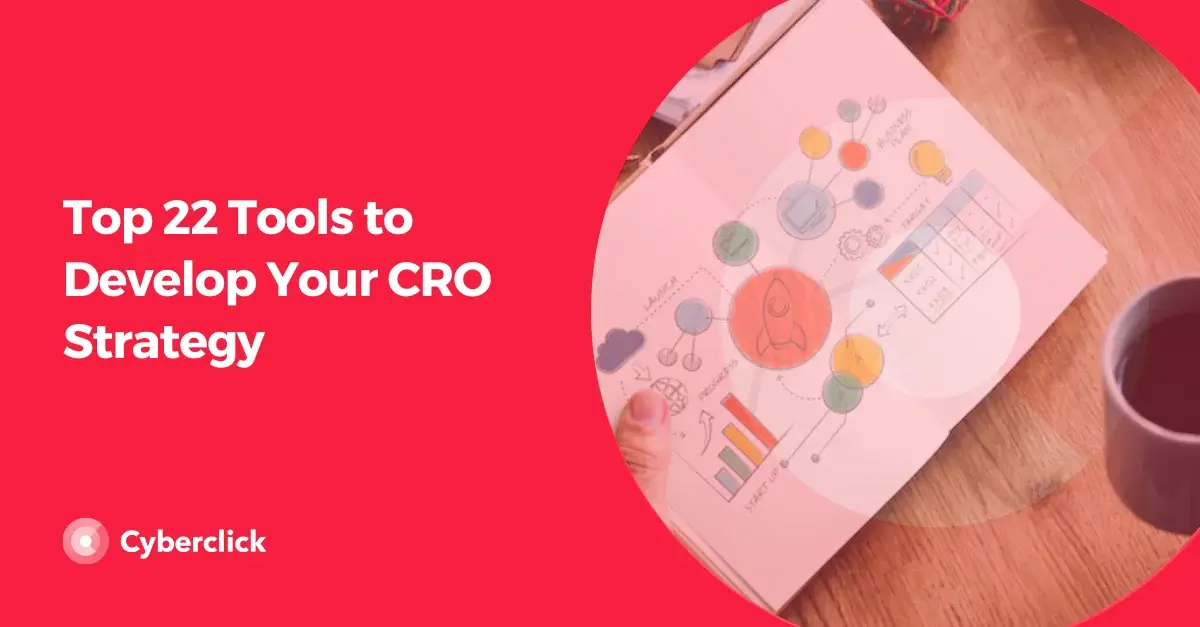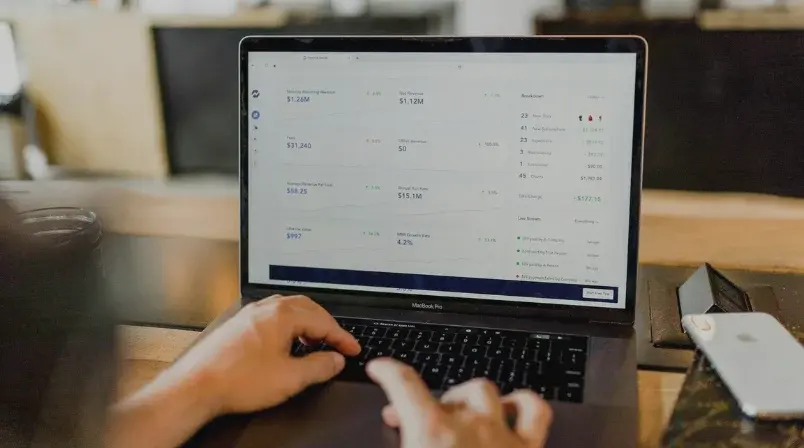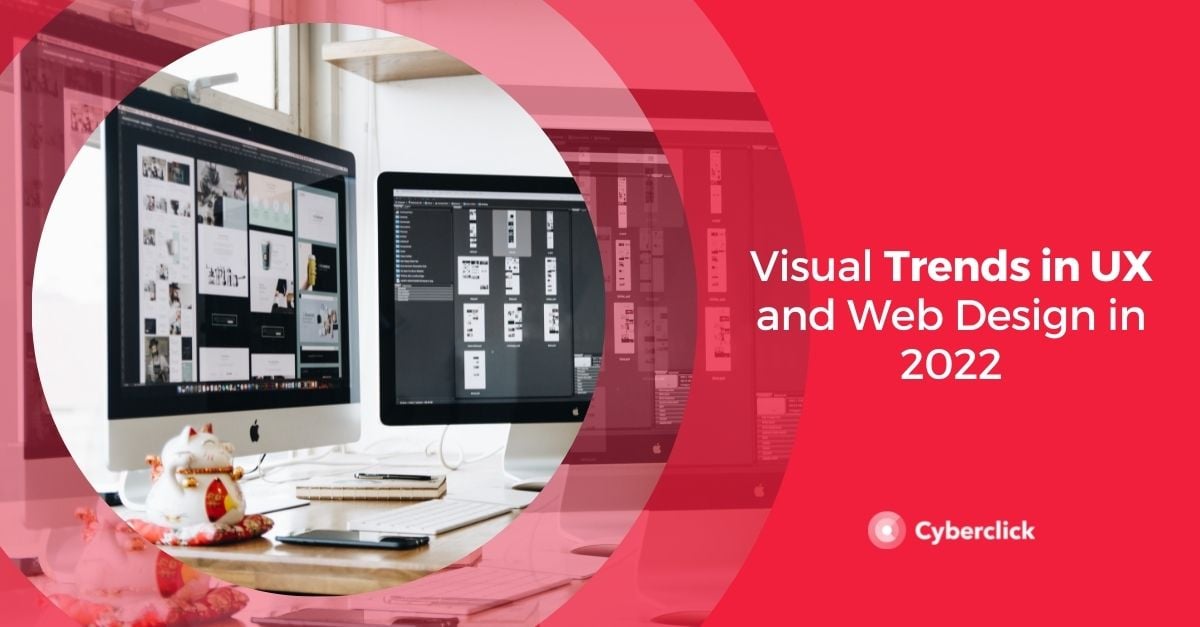Staying up-to-date with digital marketing trends is essential for a successful strategy or campaign, especially in the areas of branding, design, and UX. In this article, we explain what to expect in 2025 regarding branding, design, and UX, as everything points to a focus on improving user experience and creating more personalized content.

2025 Branding, Design, and UX Trends
UX Trends
User experience (UX) refers to how a person perceives and interacts with a product, system, or service. Since usability, efficiency, and satisfaction are characteristics users value increasingly, companies will need to prioritize these aspects and follow key trends if they want to stand out and succeed.
Personalization in UX and AI
In 2025, companies are expected to adapt much more to the specific needs, preferences, and behaviors of users by offering highly personalized products, services, and experiences to increase retention and satisfaction. To do this, brands will make greater use of AI and more advanced algorithms to analyze vast amounts of data and anticipate user needs and desires. This means the use of chatbots and recommendation engines is likely to grow in 2025, helping automate certain processes and enabling predictive experiences.
Dark Mode Optimization
Dark mode will continue to evolve, becoming more accessible and flexible. This goes beyond just offering both options on screen devices; it will also involve automatic transitions based on time of day or ambient lighting conditions. In addition to improving user experience, dark mode saves battery and improves energy efficiency across devices.
What needs to be considered here is that this trend requires thinking about various elements when designing and creating web content. Everything must adapt to stand out even in dark mode. This means choosing the right colors so buttons, icons, images, graphics, and other elements remain visible while keeping the text legible for all users, including those with visual impairments.
.webp?width=800&height=533&name=Dark%20mode%20email%20marketing%20yahoo%20(1).webp)
Invisible Design and Evolved Minimalism
Invisible design and evolved minimalism will lead to the removal of unnecessary visual elements or those that don’t add significant value to the user. This trend will focus on creating intuitive, simple interfaces and integrating subtle interactions through gestures, voice commands, or microinteractions, reducing the need for traditional elements, as seen in smartphones. This requires a lot of design work, ensuring that functionalities remain rich while balancing aesthetics and usability.
There are already examples of invisible or minimalist design, such as Google Search, which offers a clean interface with just a search field, logo, and the essential buttons. Its usefulness and functionality have improved over time, thanks to AI and algorithms enhancing the search experience in the background.
Apple is another example that prioritizes content, emphasizing images and adding only essential text. Its interactions and navigation are highly intuitive, with menus and buttons becoming visible only when needed.

Augmented Reality and Immersive Experiences
Although still evolving, augmented reality (AR) and virtual reality (VR) are expected to play a larger role in 2025 as more brands use AR to offer immersive experiences. These technologies generate high levels of engagement by presenting products or services within more realistic contexts and allowing interaction, significantly improving the user experience. Brands like Ikea already allow customers to visualize how furniture will look in their homes, while Amazon lets users see products virtually before delivery to reduce returns.

Predictive Heat Maps
Predictive heat maps will be used more than ever in 2025, as AI and data analytics allow the prediction of user behavior on a website or digital platform. Unlike traditional heat maps, which show which elements users engage with, predictive heat maps anticipate user actions based on previous behavioral patterns. This enables companies to create content and design websites in a way that enhances usability, increases time spent on-site, and proactively drives conversions.
Evolution of Conversational Interfaces and Voice Interaction
Voice interaction and conversational interfaces are gaining popularity, and by 2025, they are expected to be more fluid and natural due to AI advancements. Virtual assistants like Siri and Alexa, as well as numerous chatbots, can already understand context, interpret complex intentions, and provide responses based on past interactions, resulting in more personalized responses.
Web Design Trends
Web design will be key for professionals, brands, and organizations aiming to offer a user-centered, personalized experience. Here’s what to expect in 2025:
3D Animations
Users are increasingly seeking interactive and immersive experiences, making the integration of 3D animations a potential solution to meet these needs. Web technology has advanced to the point where 3D animations can now be seamlessly integrated into websites. These animations offer dynamic product displays, clearer information visualization, and real-time responses to user actions, enhancing both usability and engagement. 3D animations are expected to be a major trend in web design for 2025.
Interactive Videos and Graphics
Interactive videos and graphics, which change based on user interaction, will be used more frequently in 2025. These formats allow users to obtain additional information, enhance navigation, and increase user interest. As brands focus on creating interactive content, particularly for displaying data or offering a dynamic, attractive experience, this trend will help them stand out in a crowded market. Additionally, interactive elements allow users to filter or customize the information they need, improving their overall experience.
.webp?width=800&height=448&name=Interactive%20elements%20on%20social%20media%20(1).webp)
Parallax Scrolling
Parallax scrolling, where different elements move at varying speeds as a user scrolls through a webpage, creates a sense of depth and dynamism. Beyond its aesthetic benefits, it helps guide users more fluidly through content, making it a key technique in web design for 2025.
Simple, Direct Text
Users prefer easy-to-read content that provides quick access to information. This will lead professionals and organizations to create shorter, clearer, and more direct content with accessible language and minimal jargon. The way content is presented will also change, becoming as minimalist as possible to improve attention and information retention. Clean typography and simple designs will ensure that content stands out, enhancing user engagement in an information-saturated digital environment.
Vertical and Dropdown Navigation
Vertical and dropdown navigation will become more popular, especially as most users now access websites via mobile devices. This type of navigation provides better content organization, helping users find what they’re looking for without overwhelming the interface, while optimizing screen space. It also aligns with the clean, minimalist designs that users seek, prioritizing functionality and experience over aesthetics.
Branding Trends
Branding will be crucial for the success of marketing strategies and campaigns, as much focus will be placed on shaping consumer perceptions of a brand through visual elements, accessibility, and more. Here are the branding trends to expect in 2025:
Increasing Focus on Accessibility
Brands are increasingly understanding the importance of being inclusive and appealing to a diverse audience. It’s no longer enough to provide products, services, or experiences for everyone; brands must also create user-friendly interfaces, readable text, and color palettes that meet WCAG (Web Content Accessibility Guidelines) standards. Accessibility will continue to gain importance, meaning that digital interfaces will be designed with all types of users in mind, including those with visual, auditory, or motor impairments.
Moreover, accessibility is a branding strategy that not only enhances user experience but also strengthens brand reputation, making it a key focus for 2025.
Neumorphism Evolves into Glassmorphism
While neumorphism gained popularity for its soft, dimensional aesthetic, it is gradually giving way to glassmorphism, which focuses on minimalism and elegance through transparency, blur effects, soft shadows, bright colors, and fine outlines. This trend is expected to dominate web design in 2025, creating a fresh, modern visual experience without overloading the space. Designers will aim to balance visual appeal with ease of use and navigation, prioritizing user comfort.
Colors for 2025
Colors will play a key role in improving user experience and conveying that desired minimalist, elegant, and comfortable image. Earth tones, natural and warm colors, will be a great choice, along with monochromatic palettes. Pastels, offering warmth and comfort, and neutrals like grays, beiges, and whites, will also be popular choices due to their flexibility and adaptability in any design.
In general, colors in 2025 will aim to reflect balance, well-being, and a connection to the environment, while also focusing on user comfort and readability. The right color choices will enhance a brand’s image while ensuring the user feels at ease.
Product Designer y CRO Strategist en Cyberclick, cuenta con una amplia trayectoria en el diseño de experiencias de usuario (UX) y en la implementación de estrategias de optimización de la tasa de conversión (CRO). Su enfoque analítico, combinado con su experiencia en diseño y desarrollo frontend, le permite ofrecer una visión integral en cada proyecto. Gracias a su habilidad para comprender a los usuarios y alinear sus necesidades con los objetivos de negocio, crea la sinergia perfecta para impulsar el crecimiento de las marcas.
Product Designer and CRO Strategist at Cyberclick, she has extensive expertise in User Experience (UX) design and the execution of Conversion Rate Optimization (CRO) strategies. Her analytical mindset, coupled with her skills in design and frontend development, enables her to provide a comprehensive perspective on each project. By deeply understanding users and aligning their needs with business goals, she fosters the perfect synergy to drive brand growth.






Leave your comment and join the conversation